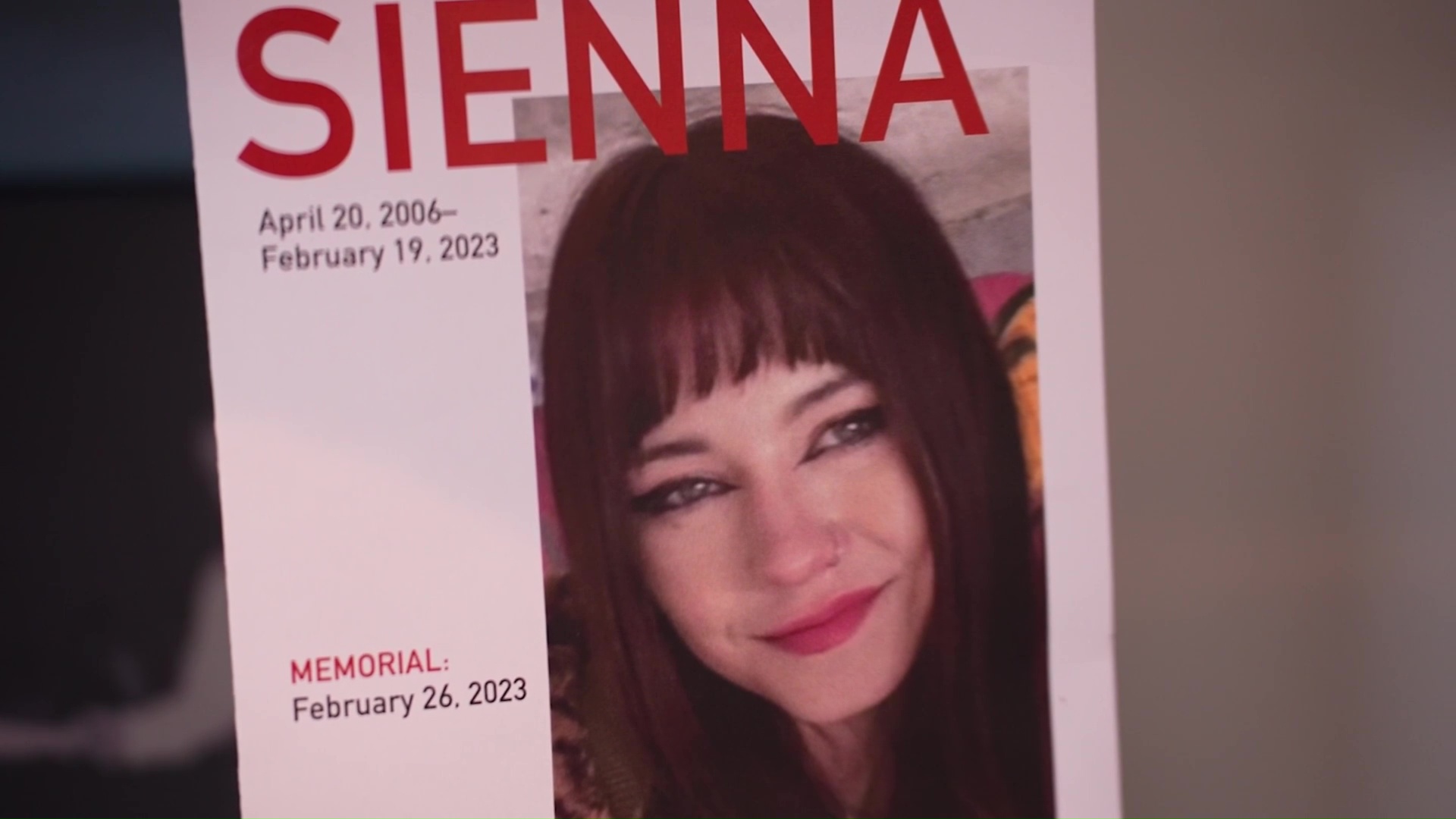It was Sept. 17, 2022, when Brandi Melo sent her son, 13-year-old Kaysen Villarreal, to a sleepover.
That night, Melo said they texted each other ‘I love you.’
The next morning, her older son called to tell her that Kaysen was dead.
“Kaysen had told his friends that he had a headache and his friends gave him a blue pill and told him it was Aleve,” said Melo.
Get DFW local news, weather forecasts and entertainment stories to your inbox. Sign up for NBC DFW newsletters.
Instead, it was a fentanyl-laced pill.
"Nothing's the same without him, nothing. He was my best friend,” she said.
Until then, Melo said she’d never heard of the synthetic opioid the Centers for Disease Control and Prevention reported killed nearly 72,000 Americans in 2021.
"It's scary. It's just scary. There have been younger kids than Kaysen since this happened,” said Melo.
This month, a study published in the Journal of Pediatrics said opioids, including fentanyl, are now the most common cause of poisoning deaths among kids five and under. It’s a trend North Texas Poison Center Clinical Educator Anelle Menendez said they’ve noticed in recent years as specialists field dozens of calls a day.
"In about 2005, 24% of the fatalities that occur in children under the age of five, were due to opiates,” said Menendez. "After being in the thick of this for several years, as you can imagine, the numbers have gone up, because there's so much more access to opiates nowadays."
Unlike teenagers, who are often poisoned taking a fentanyl pill disguised as something else, Menendez said most cases involving young children happen in the home.
In nearly every case, she said a toddler got into a bottle a parent believed was out of their reach.
“The parent obviously wasn't meaning any harm or anything. They were just not educated enough to keep the medication properly put away,” she said. “As a clinician, those are the ones that stick the most and it's unfortunate because it is totally preventable.”
According to the CDC, signs of an opioid overdose include:
- Small, constricted “pinpoint pupils.”
- Falling asleep or losing consciousness.
- Slow, weak or no breathing.
- Choking or gurgling sounds.
- Limp body.
- Pale, blue or cold skin.
After burying her own baby, Melo urges fentanyl is a problem no parent can ignore.
"It's not just my problem. It's not just the cops' problem. It's not just the school's problem. It's the whole community as a whole. We need to stand together and fight for our babies,” said Melo.
The North Texas Poison Center, located in Parkland Memorial Hospital, keeps its hotline open 24/7 to help callers with questions or concerns about potentially deadly substances.
The hotline can be reached at 1-800-222-1222.
WHAT IS FENTANYL?
Fentanyl is a synthetic opioid that is 50 times more potent than heroin and 100 times more potent than morphine. Just two milligrams of fentanyl, which is equal to 10-15 grains of table salt, is considered a lethal dose.
Without laboratory testing, there is no way to know how much fentanyl is concentrated in a pill or powder. If you encounter fentanyl in any form, do not handle it and call 911 immediately.
Fentanyl remains the deadliest drug threat facing this country. According to the Centers for Disease Control and Prevention, 107,622 Americans died of drug overdoses in 2021, with 66% of those deaths related to synthetic opioids like fentanyl.
Drug poisonings are the leading killer of Americans between the ages of 18 and 45. Fentanyl available in the United States is primarily supplied by two criminal drug networks, the Sinaloa Cartel and the Jalisco New Generation Cartel (CJNG).
WHAT IS RAINBOW FENTANYL?
In August 2022 the Drug Enforcement Administration issued a public advisory about the alarming emerging trend of colorful fentanyl available nationwide.
Brightly-colored fentanyl, dubbed "rainbow fentanyl" in the media, is being seized in multiple forms, including pills, powder, and blocks that resemble sidewalk chalk.
“Rainbow fentanyl—fentanyl pills and powder that come in a variety of bright colors, shapes, and sizes—is a deliberate effort by drug traffickers to drive addiction amongst kids and young adults,” said DEA Administrator Anne Milgram. “The men and women of the DEA are relentlessly working to stop the trafficking of rainbow fentanyl and defeat the Mexican drug cartels that are responsible for the vast majority of the fentanyl that is being trafficked in the United States.”
Despite claims that certain colors may be more potent than others, there is no indication through DEA’s laboratory testing that this is the case. The DEA said every color, shape, and size of fentanyl should be considered extremely dangerous.
WHAT IS NARCAN?
According to the manufacturer, "Narcan nasal spray is a prescription medicine used for the treatment of a known or suspected opioid overdose emergency with signs of breathing problems and severe sleepiness or not being able to respond."
The active ingredient in Narcan is naloxone hydrochloride. Narcan is the brand name for the device that delivers naloxone into the nasal cavity.
According to the Substance Abuse and Mental Health Services Administration, naloxone is an FDA-approved opioid antagonist medication that is used to reverse an opioid overdose. SAMHSA said naloxone is a temporary treatment and its effects do not last long so it's critical to obtain medical intervention as soon as possible after administering or receiving naloxone.
WHAT IS NALOXONE?
According to the National Institutes of Health's National Institute on Drug Abuse, naloxone is a medicine that can rapidly reverse an opioid overdose by attaching itself to opioid receptors and either reversing or blocking the effects of opioids.
"Naloxone can quickly restore normal breathing to a person if their breathing has slowed or stopped because of an opioid overdose. But, naloxone has no effect on someone who does not have opioids in their system, and it is not a treatment for opioid use disorder. Examples of opioids include heroin, fentanyl, oxycodone (OxyContin), hydrocodone (Vicodin), codeine, and morphine.
Naloxone comes in two FDA-approved forms, injectable and as a nasal spray.
Naloxone works for only 30 to 90 minutes and many opioids remain in the body longer than that. It is possible for a person to still experience the effects of an overdose after a dose of naloxone wears off so it's imperative to call 911 or get the overdosing person medical attention as soon as possible after the dose is administered.
The U.S. Food and Drug Administration on March 29, 2023, approved selling naloxone without a prescription, setting the overdose-reversing drug on course to become the first opioid treatment drug to be sold over the counter.
DOES THE FDA APPROVAL MEAN I CAN BUY IT AT CVS OR WALGREENS?
Yes. Narcan was expected to be available over-the-counter at pharmacies by late summer, the company said.
Other brands of naloxone and injectable forms will not yet be available over the counter, but they could be soon.
The nonprofit Harm Reduction Therapeutics Inc., which has funding from OxyContin maker Purdue Pharma, has an application before the FDA to distribute its version of spray naloxone without a prescription
Once available over the counter, the drug could be available at places without pharmacies, like convenience stores, supermarkets and from online retailers.




